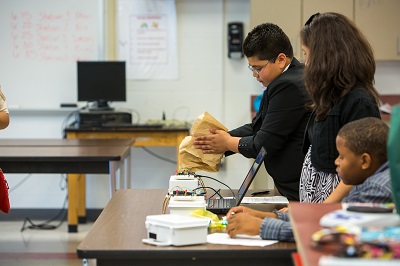Visualize Air Quality with RETIGO
By Kayla Schulte
Today, more and more researchers and citizens are collecting their own air quality data using lower cost and portable instruments. While air quality monitoring technology has expanded into the hands of the individual with the creation of apps and small mobile sensors, the means to explore the measurements in-depth has been fairly restricted—until now.
EPA scientists recently developed the Real-Time Geospatial Data Viewer, or “RETIGO,” a free, web-based tool that allows users to visualize air quality data derived from any number of monitoring technologies.
RETIGO puts the power of analysis in the user’s hands with its interactive platform and easy-to-navigate interface. The user simply uploads their air quality data to the online tool system to visualize and interact with small to large data sets over space and time. Data collected while driving, riding a bicycle, or walking along a planned route can be explored on a map interface and also shown on several other graphs.
Learn More!
Interested in giving RETIGO a try for yourself? EPA researchers are conducting four training webinars in November where you will be able to learn more, pose questions, and chat with them and other participants. The interactive component will be conducted by both text and audio (you will need to use a computer microphone or connected headset for live audio).
To find out how you can use this innovative visualization tool to explore your measurements and discover how factors such as nearby pollution sources and wind direction can affect your observations, join one of the following webinars:
- Monday, November 17, 9:00 am to 10:00 am, EST
- Monday, November 17, 11:00 am to 12:00 pm, EST
- Wednesday, November 19, 9:00 am to 10:00 am, EST
- Wednesday, November 19, 3:00 pm to 4:00 pm, EST
Webinar: https://epa.connectsolutions.com/retigotutorial/
Contact: retigo@epa.gov for more information.
Launching RETIGO is just one of the many ways EPA encourages environmental awareness by inviting individuals to explore their surroundings through innovative science. Join use later this month to learn more!
About the author: Kayla Schulte is a Student Services Contractor with EPA’s Air, Climate, and Energy program. She is devoted to communicating pertinent information about the environment to the largest possible audience.



